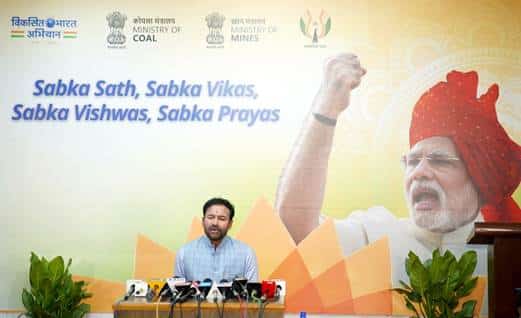India’s Commitment to Linguistic Heritage

The Government of India is dedicated to preserving and promoting the country’s rich linguistic heritage. At a recent press conference, Union Minister Shri G. Kishan Reddy articulated the government’s vision for a developed India by 2047. He emphasized the crucial role of languages in fostering cultural development and national unity. India’s linguistic diversity is not just a means of communication; it is a treasure trove of knowledge, culture, and traditions. This article explores the government’s initiatives and policies aimed at safeguarding and enhancing India’s linguistic landscape.
Historical Context of Language in India
Languages in India have often been at the center of political interests. Throughout history, various attempts have been made to suppress regional languages, limiting people’s freedom of expression. A notable example is the 1835 policies of Thomas Macaulay, which prioritized English over classical Indian languages. This shift emphasized European knowledge systems while sidelining India’s rich linguistic heritage. Recognizing these historical challenges, the Indian government has made concerted efforts to preserve and protect regional languages. Minister Reddy quoted former Prime Minister Atal Bihari Vajpayee, who stated, “Language is not merely a medium of expression but the soul of our culture.” This perspective underscores the importance of languages as powerful tools for empowerment and personal expression.
The inclusion of languages in the Eighth Schedule of the Indian Constitution marks a significant step toward recognizing linguistic diversity. Initially, the Eighth Schedule included 14 languages, which has now expanded to 22. This expansion reflects India’s commitment to preserving its diverse linguistic heritage. The addition of languages like Sindhi in 1967 and Bodo, Dogri, Maithili, and Santhali in 2003 demonstrates the government’s ongoing support for regional languages. The inclusion of Santhali, in particular, highlights the government’s respect for tribal culture and values.
Government Initiatives for Language Development
Under Prime Minister Narendra Modi‘s leadership, the focus on developing Indian languages has gained momentum. The recognition of Kashmiri, Dogri, Urdu, Hindi, and English as official languages in Jammu and Kashmir following the abrogation of Article 370 is a significant step toward inclusivity. This decision empowers local communities and promotes linguistic diversity.
The government has also prioritized classical languages, which safeguard India’s ancient cultural heritage. Recently, the Union Cabinet approved the designation of Marathi, Pali, Prakrit, Assamese, and Bengali as classical languages, bringing the total to 11. This recognition reflects India’s historical and cultural pride. To promote these languages, several initiatives have been launched, including the establishment of Central Universities for Sanskrit and the Central Institute of Classical Tamil. These institutions focus on research, translation, and the promotion of classical languages, ensuring their continued relevance in modern society.
The National Education Policy (NEP) 2020 has been a transformative step in promoting Indian languages. The policy emphasizes teaching in the mother tongue or local language up to Class 5 and encourages its use up to Class 8. This approach enhances comprehension and intellectual development among students. The NEP also promotes the use of regional languages in higher education and STEM fields, recognizing the cognitive benefits of learning in one’s mother tongue.
Technological Advancements and Cultural Initiatives
The Indian government is leveraging technology to promote its languages. The National Language Translation Mission and the Bhashini Project aim to bridge linguistic barriers through digital technology. These initiatives enable seamless communication among diverse language speakers, making education more accessible. Educational institutions and ed-tech companies are encouraged to develop digital learning materials in regional languages, further enhancing accessibility.
Cultural initiatives, such as the Ek Bharat Shreshtha Bharat program, celebrate India’s linguistic and cultural unity. Events like the Saurashtra Tamil Sangamam and Kashi Tamil Sangamam highlight historical connections between regions and promote cultural exchange. The government’s emphasis on preserving Tamil, one of the world’s oldest languages, underscores the collective responsibility of all Indians to protect and enrich their linguistic heritage.
The government’s vision includes making all Indian languages globally competitive. Initiatives like language-based tourism, literature festivals, and linguistic research aim to showcase India’s diversity on the global stage. As Prime Minister Modi stated in Mann Ki Baat, “Just as we cannot abandon our mother, we cannot abandon our mother tongue.” This sentiment reflects the government’s commitment to fostering linguistic pride and ensuring that modern education is accessible in regional languages.
Observer Voice is the one stop site for National, International news, Sports, Editor’s Choice, Art/culture contents, Quotes and much more. We also cover historical contents. Historical contents includes World History, Indian History, and what happened today. The website also covers Entertainment across the India and World.

